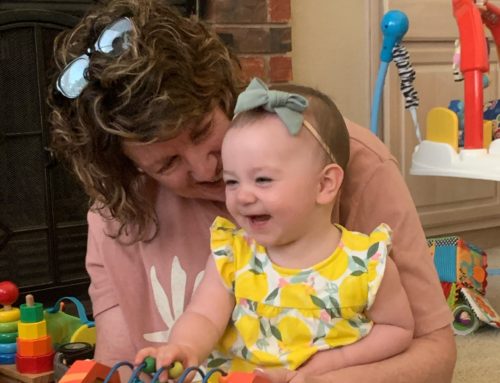Raising PG kids in an R world is like a tropical cruise as a young couple . . . well, you know, without the tropics and without the cruise. But at least you’re young.
My wife and I could hardly wait as we boarded our first cruise. We had read all about it, but after settling in, we made a common mistake – we rushed outside and got burned. So we spent a week on a ship in needless pain. Yes, we knew to apply sunscreen – a boundary we knew to not cross – but we were too excited to stop long enough to apply it.
So too with raising kids. You can know all about it, but when your precious toddler learns the power of “no” and when your teenager explains why she’s smarter than you, you can feel a little burned, and even peel a bit, wondering what lessons you failed to apply.
The key, though, isn’t trying to over-protect kids from all of society’s problems – the equivalent of cruising but staying inside the whole time to avoid sunburn. Even worse, it’s not under-protecting kids – the equivalent of rushing outside without sunscreen. The key is creating clear boundaries that neither underexpose nor overexpose our kids to real life.
Over-protecting kids drives them to rebel. Like jaundiced newborns whose bodies can’t get rid of excessive bilirubin in their bloodstream, kids with over-protective parents aren’t prepared to rid themselves of excessive worldly influences in their lives. They need clear boundaries that allow exposure to the Light so that they can handle being exposed to the dark.
The opposite – under-protecting kids – is like leaving them in the sun too long without sunscreen. Without strong SPF-type boundaries, you’ll burn their relationships, scar their hearts, and cause them to be susceptible to even worse problems later in life.
Setting clear boundaries is the third of three parts to raising PG kids in an R world. We’ve already reviewed the first two parts: Intriguing plots (click here) and Memorable characters (click here). Here are four ways to create clear boundaries at home that give kids the right amount of protection in order to prepare them for the challenges of being parents themselves one day.
4 ways to create Clear Boundaries at home
- Choose age-appropriate boundaries
John Meador says there are 4 stages of parenting: Caretaker, Cop, Coach, and Consultant. And each stage needs age-appropriate boundaries. We keep newborns within reach, toddlers within sight, and preteens out of life’s gutters. Some boundaries must change as kids change. A 9 pm curfew works for 10 year olds but not when they’re 25.
Other boundaries, though, are non-negotiable regardless of your kids’ ages. For example, morals can’t morph and faithfulness can’t fade. My dad decided early on to not tolerate inappropriate language on TV, and that hasn’t changed. Never let your kids’ age determine your response to wrong boundaries. Choose early which boundaries need to adapt and which never will.
- Cast winning boundaries
Kids need you to not only choose boundaries. They also need you to cast a vision of why they matter. It’s like how my dad taught me to cast a rod and reel in order to catch a trophy fish. I learned when to yank them in and when to give them extra line so that the fish could wander a bit before landing it. In strange ways, dad was preparing me for parenting.
Similarly, kids need you to cast a vision that lands the real “trophy” – their hearts and souls. Landing souls, like landing fish, requires you to know when to give kids leeway and when to yank them back. It also requires great hooks and lures. You can’t win a child’s heart by casting empty hooks and poor lures. By casting boundaries that snag your kids’ hearts, you can reel in their souls.
- Stretch, but don’t break, boundaries
Setting stretch-but-don’t-break boundaries is a never-ending challenge that stretches you too. It reminds me of my kids’ toy, “Stretch Armstrong,” whose manufacturer said you could stretch him, but not break him. Turns out, they were wrong. My kids stretched Mr. Armstrong to a point of breaking (and almost did the same to me a few times).
So how do you set boundaries that, unlike Mr. Armstrong, can stretch but not break? The answer is found in Mark 2:22 – don’t put new wine into old wineskins. Give kids new “wineskins” – clear boundaries that stretch as needed over time. Don’t use old, needlessly-rigid boundaries that worked for you but don’t work for your kids. Old boundaries can burst your kids’ bubble. Instead, set boundaries that help them trust you so that they’ll trust the God you serve.
- Never compromise boundaries
Compromising that settles disputes can be great, but compromising that accepts low standards is not. To preteens, low standards are a Willie Wonka ticket to empty fun. And to teenagers, low standards are a ticket to acceptable mediocrity. But when kids become parents themselves, they look back and see your compromised standards as excuses that over- or under-protected them.
Thankfully, no matter what kids say now, they don’t expect perfect boundaries. But they do expect you to choose age-appropriate boundaries, cast a vision of why they matter, stretch them where appropriate, and hold to boundaries that are in your kids’ best interests.
It’s not easy, but it’s also not rocket science. Boundaries act like sunscreen to protect kids from the harmful UV rays of a world that compromises principles for convenience and selfishness. And when you peel emotionally because you got burned (hey, it happens to all of us), please don’t get discouraged. It’s all part of the healing process . . . whether you’re basking on a sunny cruise or baking in the heat of everyday parenting.
Questions: How are you protecting your kids without over- or under-protecting them? How well are your boundaries preparing them to stand out as PG kids in an R world?
P.S. For a creative idea for Christmas, please consider getting your family & friends their own copy of Well Done, Mom & Dad!: A Practical Guide to Turn Good Intentions into Godly Legacies (click here). It’s a practical gift that can bless their family for years and generations to come.






Leave A Comment